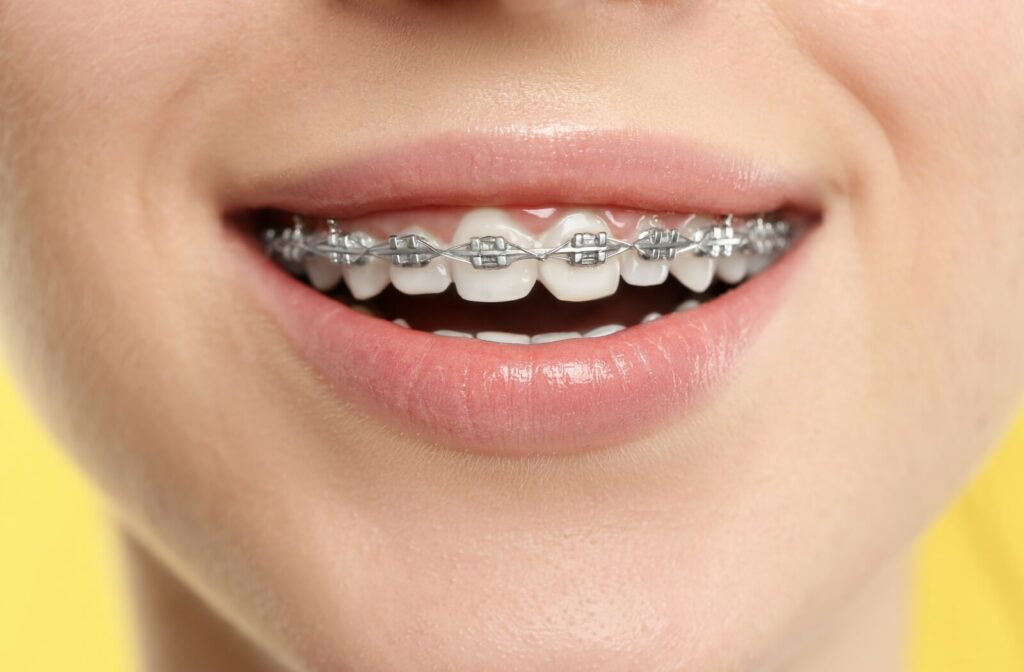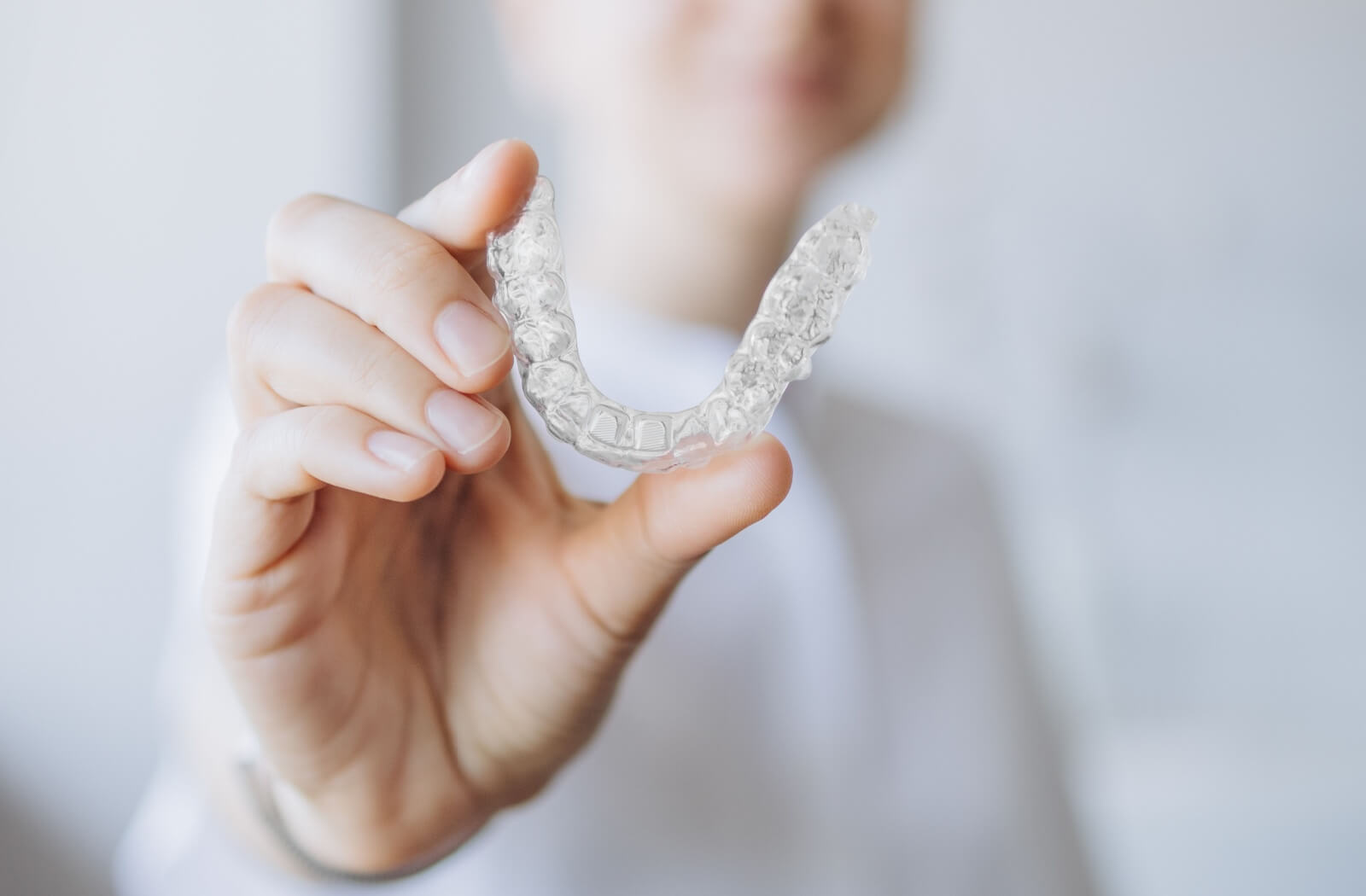Braces have long been the go-to choice for correcting tooth alignment and other issues. But Invisalign is a modern advancement that is an excellent choice for many people. Although Invisalign isn’t necessarily better than braces, these clear aligners offer some specific advantages.
For minor corrections, where esthetics is a top concern, Invisalign may be the better option. At the same time, major orthodontic corrections may require the firm correction that braces offer. Your dentist can help you choose the option that’s right for you so you can get the stunning smile you deserve.
Braces vs Invisalign
Before we explore their benefits and limitations, let’s understand what each treatment entails and how they function.
Braces
Traditional braces use a system of metal brackets and wires to align your teeth. These brackets are affixed to each tooth and connected with wires, which are gradually tightened to guide your teeth into their proper positions.
Braces are known for their reliability and effectiveness, particularly in addressing complex dental issues such as severe crowding, overbites, or underbites. They’ve been a trusted orthodontic solution for decades and remain a top choice for many orthodontists.
Invisalign
Invisalign is a modern, nearly invisible answer to traditional braces. Instead of brackets and wires, Invisalign employs a series of clear, custom-made aligners that fit snugly over your teeth. Each aligner gently shifts your teeth into position over time. Invisalign is made from smooth, BPA-free plastic and offers an elegant, discreet alternative that has taken orthodontics to new heights.
A few things that Invisalign can treat include:
- Mild to moderate teeth crowding
- Gaps between teeth
- Overbites and underbites
- Crossbites
- General alignment improvements
While Invisalign is a versatile option for many, certain severe cases may still require traditional braces to achieve the desired results.
The Pros of Invisalign
While it may not be for everyone, Invisalign has some significant benefits.
Subtle Appearance
One of Invisalign’s greatest attractions is its barely-there look. The aligners are virtually invisible, creating an understated elegance that complements both casual and professional settings. You can confidently smile and engage in conversations without drawing attention to your orthodontic treatment.
Removability
Unlike braces, Invisalign aligners can be removed as needed. Say goodbye to food restrictions. Enjoy your favorite dishes or indulge in a gourmet meal without worrying about food getting caught. You’ll also have the freedom to remove the aligners for special occasions, such as photographs or important events.
Comfort
Invisalign aligners eliminate the irritation and soreness associated with the metal brackets and wires of traditional braces. There aren’t any sharp edges against your cheeks or gums, making the treatment more comfortable and soothing.
Easy Brushing & Flossing
Oral hygiene becomes a breeze with Invisalign. Simply remove your aligners to brush and floss as you usually would. This enhances your overall dental health by reducing the risk of plaque buildup and decay during your treatment.
The Cons of Invisalign
For all its advantages, Invisalign isn’t the “perfect” solution, and it does come with a couple of drawbacks.
Demands Discipline
While the freedom Invisalign provides is incredible, it also requires commitment. For optimal results, you’ll need to wear your aligners for 20 to 22 hours a day. Forgetting to put them back in after meals or skipping nighttime wear can derail your progress.
Requires More Frequent Brushing
Since you’ll need to clean your teeth after every meal or snack before reinserting your aligners, Invisalign users often find themselves brushing multiple times a day. While this can enhance oral hygiene, it may feel cumbersome for some.

The Pros of Braces
Sometimes, braces are simply the better option.
Complex Corrections
Braces shine when it comes to addressing severe alignment issues. From significant overcrowding to complex bite problems, braces deliver proven results. Their fixed design gives your orthodontist complete control over your treatment, allowing for precise adjustments that guide even the most stubborn teeth into their proper position.
The Cons of Braces
Like any medical procedure, braces have their downsides as well.
Discomfort
The metal brackets and wires of traditional braces can cause discomfort, especially after adjustments. Soreness, irritation, and even cuts inside the mouth are common. But orthodontic wax can help alleviate these issues.
Food Limitations
Braces come with a list of food restrictions to prevent damage to the brackets and wires. Sticky, hard, or chewy foods are often off-limits, making it harder to indulge in certain treats or meals.
Discover if Invisalign Is Right for You
Choosing between Invisalign and braces ultimately comes down to your priorities, lifestyle, and the complexity of your dental issues. Both treatments offer excellent results, but Invisalign’s blend of sophistication, comfort, and subtlety makes it an especially appealing choice for many.
Whether you’re envisioning a dazzling smile that’s achieved discreetly or you’re exploring all your options for straightening your teeth, Invisalign offers a tailored approach to transforming your smile with style.
Your smile deserves expert care. Book an appointment with our expert team at The Ivory Dental Co. today and take the first step toward achieving a perfect smile.





